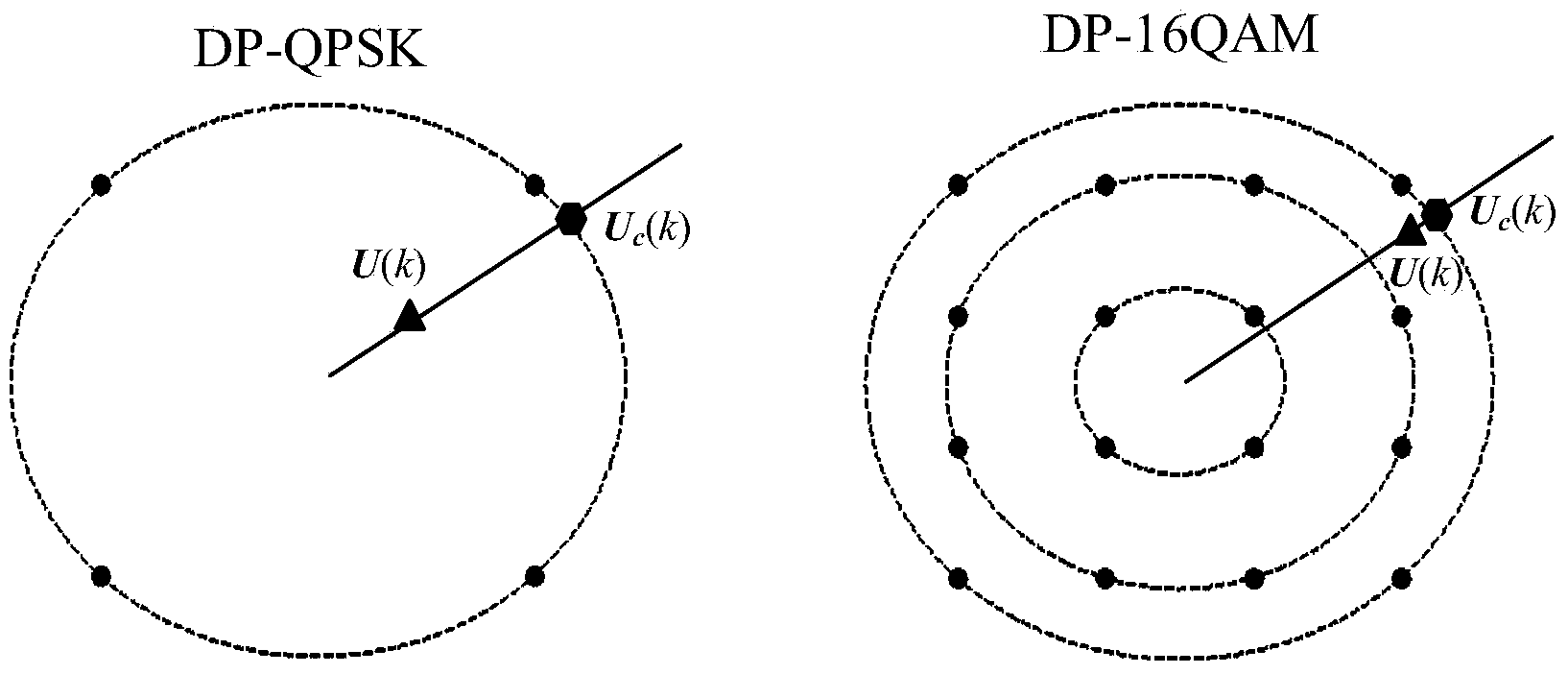Polarization state rapid tracking monitoring method based on Kalman filtering
A Kalman filter, tracking and monitoring technology, applied in the field of communication, can solve the problems of high implementation cost, only highlighting the convergence speed, increased calculation amount and memory demand, etc., and achieve fast and accurate depolarization, fast convergence speed, and high convergence accuracy Effect
- Summary
- Abstract
- Description
- Claims
- Application Information
AI Technical Summary
Problems solved by technology
Method used
Image
Examples
Embodiment Construction
[0014] The present invention will be further described below in conjunction with the accompanying drawings and specific embodiments.
[0015] attached figure 1 It is a structural block diagram of a typical polarization multiplexing coherent optical communication system. The transmitter generates two polarization states of X and Y for combined transmission. After being transmitted through an optical fiber link, a balance detection is performed and converted into four electrical signals, representing two The real (I) and imaginary signal (Q) on the polarization state. After passing through a low-pass filter, the electrical signal enters the digital signal processing module (DSP) for sampling and digital-to-analog conversion. Through digital signal processing, clock recovery, dispersion compensation, depolarization, frequency offset and phase equalization are realized. The method proposed by the present invention belongs to the depolarization algorithm in DSP processing, but is ...
PUM
 Login to View More
Login to View More Abstract
Description
Claims
Application Information
 Login to View More
Login to View More - R&D
- Intellectual Property
- Life Sciences
- Materials
- Tech Scout
- Unparalleled Data Quality
- Higher Quality Content
- 60% Fewer Hallucinations
Browse by: Latest US Patents, China's latest patents, Technical Efficacy Thesaurus, Application Domain, Technology Topic, Popular Technical Reports.
© 2025 PatSnap. All rights reserved.Legal|Privacy policy|Modern Slavery Act Transparency Statement|Sitemap|About US| Contact US: help@patsnap.com



